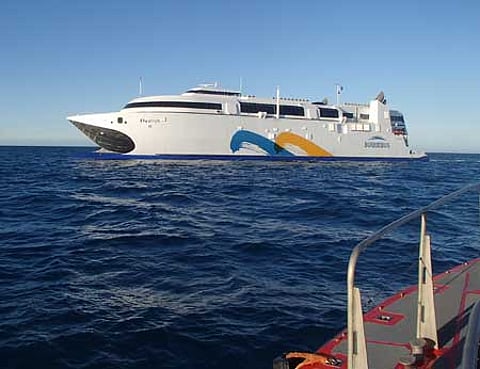

A 536,000-litre consignment of fuel – including eight 24,000-litre bladders stored on the vehicle deck – was loaded by the wave-piercing catamaran HSC 'Francisco' during a fleeting visit to CentrePort Wellington in the weekend.
Fresh from setting a world record speed of 58.1 knots during sea trials of the Tasmanian coast, the 99-metre Incat newbuild is on its delivery voyage to South America, where it will provide a ferry service on the River Plate between Buenos Aires and Montevideo
The first Incat vessel to be installed with dual-fuel LNG engines, two GE Energy LM2500 marine gas turbines provide main power. Each engine is rated for 22MW and drives a Wärtsilä LJX 1720 SR water jet configured for both steering and reverse.
CentrePort marine services manager and chief pilot Captain Charles Smith says his port has previously hosted bunker visits from other fast ferries belonging to Buquebus: "One vessel had previously topped up at the Chatham Islands [New Zealand's eastern-most islands, located 680km southeast off the mainland] but this was considered risky and it involved considerable planning," he said.
"Wellington is able to supply, on demand, the quantities of diesel fuel required on a safe and easily accessible berth."
The helmstation has been fitted with an advanced electronics and navigation package, including a sophisticated Turbine Overview System
CentrePort supplies fuel, via Mobil's tank facilities in the Ngaio Gorge, directly to Interisland Line ferries at their berths and via a pipeline to Aotea Quay, where there are several common user bunker points. Two grades of fuel are available – Marine Fuel Oil (MFO) and Marine Gas Oil (AGO).
"Apart from local vessels such as tugs and vessels belonging to NIWA which take AGO, the two Strait Shipping ferries also bunker MFO at Aotea Quay on a regular basis. The convenient central port position attracts shipping to call to take light oil bunkers."
Iain MacIntyre
